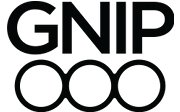Pre-symposium tutorial, May 7

Practical Sentiment Analysis
The Sentiment Analysis Symposium will be preceded Monday afternoon, May 7, 2012 by a three-hour tutorial, Practical Sentiment Analysis, 2:00 pm to 5:30 pm, designed and taught by Professor Bing Liu of the University of Illinois. Prof. Liu was featured in the January 26, 2012 New York Times article, For $2 a Star, an Online Retailer Gets 5-Star Product Reviews. There will be a 30-minute break.
You may register for the tutorial or the symposium or both.
Syllabus
Sentiment analysis or opinion mining is the computational study of people’s opinions, appraisals, attitudes and emotions toward entities, individuals, topics and their attributes expressed in text. Opinions are important because they are key influencers of our behaviors. Our beliefs and perceptions of reality are to a considerable degree conditioned on how others see the world. For this reason, whenever we need to make a decision we often seek out the opinions of others. This is true not only for individuals but also for organizations.
In the past decade, extensive research has been done and a great deal of progress has been made on sentiment analysis. In this tutorial, I will first define the sentiment analysis problem, describe its main tasks, and then present the current state-of-the-art techniques. After that, I will put things together to describe how to build a practical sentiment analysis system. Finally, I will briefly discuss some existing methods for detecting opinion spam or fake reviews on the Web. In the tutorial, various examples and demos will be given to help participants better understand how the technology works and how it can be deployed to help businesses. All parts of the tutorial will have a mix of research and industry flavor, addressing seminal research concepts and looking at the technology from an industry angle.
Tutorial Outline
In recent years, sentiment analysis has become an active research area in natural language processing and text mining due to many challenging research problems and a wide range of applications. For example, businesses always want to find public or consumer opinions about their products and services. Potential customers also want to know the opinions of existing users before they use a service or purchase a product. With the explosive growth of social media (i.e., reviews, forum discussions, Twitter, blogs and social networks) on the Web, individuals and organizations are increasingly using the content in these media for their decision making. Nowadays, if one wants to buy a product, one is no longer limited to asking one's friends and family for opinions as in the past because there are many user reviews of products on the Web. For an organization, it may no longer be necessary to conduct surveys and focus groups in order to gather consumer opinions about its products and services because there is an abundance of such information publicly available. However, finding and monitoring opinion sites on the Web and distilling the information contained in them remains to be a formidable task. The average human reader will have difficulty identifying relevant sites, finding opinion contents, and accurately summarizing the opinions in them. Automated sentiment analysis or opinion mining systems are thus needed.
- Introduction and Motivation: discuss the research and application motivations of sentiment analysis.
- Problem of Sentiment Analysis: define an abstraction of the problem to enable us to see a structure of the problem from the unstructured (and somewhat intimidating) free text. With the definitions, the tasks of sentiment analysis will naturally emerge. The core outputs will also become obvious.
- Document Level Sentiment Classification: techniques for classifying whether an opinion document (e.g., an online review) expresses a positive or negative opinion (or sentiment). Here, I will also discuss how the task can be performed in a multi-lingual environment.
- Sentence Level Subjectivity and Sentiment Classification: techniques for classifying whether a sentence expresses an opinion, and if so, whether it expresses a positive or negative opinion.
- Aspect-based Sentiment Analysis: identify entities (or topics) and their different aspects and determine sentiments expressed about them. This level of analysis is usually required in practical applications. Various algorithms for extracting entities and aspects and for aspect-level sentiment classification will be covered.
- Opinion Summarization: various methods for summarizing opinions. Due to a large number of opinions in the social media and their subjective nature, some form of summary is desired. This part of the tutorial will discuss both structured and unstructured opinion summaries.
- Sentiment Lexicon Generation: use dictionaries and domain corpuses to generate sentiment lexicon and to deal with domain and context dependent sentiments or opinions.
- Comparative Opinions: two types of opinions: regular opinions and comparative opinions. All the above topics cover mainly regular opinions. Here, we study comparative opinions which are expressed using various types of comparative and superlative sentences.
- Building a Practical Sentiment Analysis System: put everything together to discuss how to build a practical sentiment analysis system. I will cover the core components of such a system, including data collection, database design, and the modules for entity and aspect extraction, sentiment classification, summarization, and visualizations.
- Opinion Spam Detection: techniques for detecting fake reviews and opinions in social media.
Registration
You may register for the tutorial or the symposium or both. Visit the registration page.
Please note that the tutorial offering is contingent on sufficient enrollment. Registrants will receive timely advance notice and a refund if enrollment targets aren't met.












